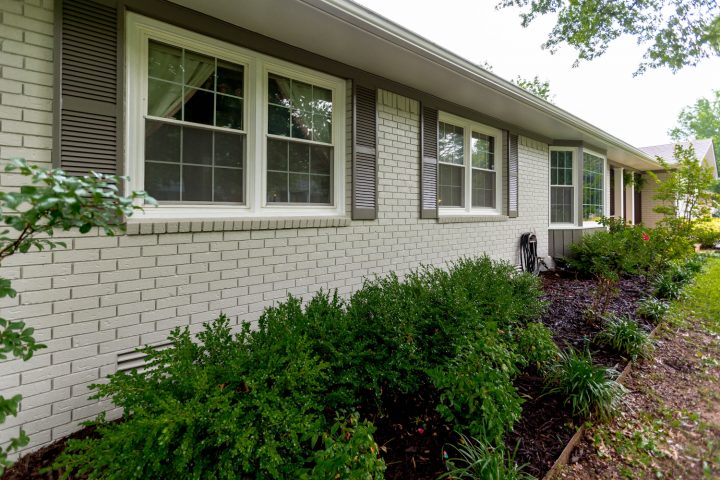
Painting Brick Houses around Rock Hill and Fort Mill
Posted on January 29, 2021
Painting Brick Homes
In the Rock Hill and Fort Mill SC. area, there are many homes clad partially or completely in brick and if yours is one, you might think there is little to do to update it. While it’s a timeless and earthy architectural element, it can date a home or a single room and cause it to feel old. Whether it’s a fireplace or brick on the exterior, you are only limited by your imagination. Stains and paints have been created to work well with the porous material. Use colors to bring new life to your bricks.
Many people assume changing the brick is as simple as painting a wall. The job is a bit more intricate than that. In addition to basic painting skills and tools, you must know that there are five things to consider before starting this project.
Painted brick is relatively permanent
Most of the time, paint can be changed and removed fairly easily. When it’s applied over brick, this isn’t the case. To put the brick back to its natural state after painting you’ll have to go through a complete restoration process. This sort of process requires specialized knowledge, tools, and products. Before you decide to paint your brick, be fully prepared to commit to the color and choices you make. Restoration can be cost-prohibitive for many homeowners.

Water damage must be detected and prevented
You absolutely must look for signs of water damage or intrusion before starting. Damp spots, mold, peeling paint, or any other water-based issues are signs of an underlying issue. Adding paint over it will only seal in the problem and cause bigger damage to occur. This can also damage the paint you put on by causing it to peel and fall off. If your bricks are damp, work with products that will allow the masonry to continue to breathe and allow the water to escape. Consult with professionals if you have any concerns about underlying water issues before you begin this project.
Efflorescence is a common problem in brickwork
Inside the brick and mortar are water-soluble salts. As the water evaporates, the salt stays behind on the walls creating an efflorescence. This happens when the bricks aren’t sufficiently prepared before a finish or sealant was applied. Our painters are experienced in dealing with correcting problems from previous paintings. They also are well versed in preparations before painting or staining brick to avoid future issues. For example, it’s imperative to inspect and clean masonry before beginning work. Our teams know this and will not cut corners on your projects.
Excessive alkalinity can damage the paint
When painting brick, alkalinity can also damage the final results. Bricks are typically neutral but the mortar around them contains soluble mineral salts, which are alkalis. Free alkalis will lead to the disintegration of oil-based paint and films. This process is called saponification. Applying the appropriate primers can prevent this sort of failure in the paint.
On-going maintenance is necessary
The painted brick will require regular maintenance. Keeping your painted bricks in good condition will provide protection against failure and the elements. When working outside, taking UV Rays into consideration is important. Once the paint begins to fade, you’ll need to consider repainting to protect the walls. One way to avoid frequent repainting is to prime appropriately and use a light exterior color.
Schedule an Estimate
If painting your interior or exterior bricks is in your future, but you’re overwhelmed by the task, call us! We have experienced teams ready to take on the project for you. Schedule a free, no-obligation estimate appointment to discuss your project.





